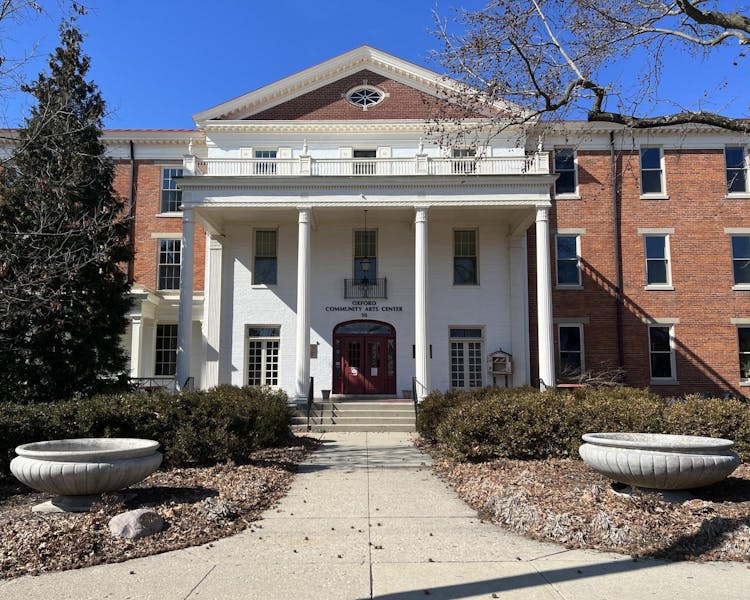A House Where Old Miami Style Meets Old World Bohemianism
IT CAN BE hard to tell in Miami what’s natural and what isn’t. The sky is often uncannily blue, the vegetation (palms, sea grapes, jacarandas) a startling green. The bright white sand on South Beach is Floridian but trucked in from mines to combat coastal erosion. And the spiny iguanas that look so at home among the tropical shrubs are in fact invasive, descendants of pets imported from South America in the 1960s; sometimes in the winter, they fall frozen from trees, landing on car windshields. Indeed, Miami often seems engaged in a battle against its own wild, swampy environs — a conflict that plays out with growing urgency in the city’s architecture. As temperatures and sea levels rise, the glass-fronted towers along the coast seem increasingly ill suited to their surroundings.
But on a muggy morning last May, a building of another sort, far rarer now in the city, was pleasantly dark and cool inside. Set on a residential street in Miami Beach’s Bayshore neighborhood, whose properties back onto an inlet of Biscayne Bay, it belongs to an earlier surge of construction in the 1940s, when the preferred dwellings of wealthy Miamians were low-slung, hacienda-like homes with thick walls and terra-cotta tile roofs — the kind that for centuries have kept houses cool in Spain and Latin America. This particular two-story, four-bedroom house, following the traditional style, is shaded and discreet. Dense beds of philodendrons and banana trees line the red brick driveway, pushing up against the white plastered facade, from which only a few small windows face outward. The 7,000-square-foot home’s focal point is, instead, inside: a large rectangular courtyard bursting with palms and giant elephant ear plants and bordered by a colonnade shaggy with wisteria. If the building’s more modern neighbors — glass cubes with manicured lawns — seem somehow both sealed against the elements and vulnerable to them, this house feels solid and purpose-built. On warm days, the doors are left open and the rooms fill with the salty sea breeze.
THE HOME’S OWNERS, a couple who work in hospitality, bought the property more than two decades ago, choosing it precisely because it contrasted with the glossy starkness of Miami’s contemporary architecture. When they decided to redecorate in 2018, they wanted a collaborator who would accentuate its history while also keeping comfort in mind. (The family often hosts at the house, enjoying long meals in the courtyard that typically end with fruit from a stand of mango, guava and papaya trees.) They’d met the Italian-born architect Fabrizio Casiraghi, 37, a few years before and knew he would do just that. Since founding his Paris-based practice in 2015, Casiraghi has become known for creating eclectic, romantic spaces that feel luxurious but lived in, both aristocratic and bohemian. He changed little of the home’s exterior but reimagined its rooms, filling them with the kinds of vintage furniture and curios typically amassed over lifetimes. “They wanted an architect who wouldn’t do something minimal,” says Casiraghi, “because it’s not a minimalist space.”
Today, a scalloped burnt orange awning trimmed with white fringe hangs above the home’s recessed front porch. A pair of vintage white wrought-iron chairs with matching orange cushions sit beneath it. The arrangement calls to mind the terraces of 1950s Mediterranean hotels but, like many of Casiraghi’s updates, also rhymes with Miami’s regional early 20th-century architecture, which borrowed freely from Europe; the Venetian Pool, the 1924 public swimming pool in the neighboring city of Coral Gables, is even ringed with striped lampposts resembling gondola poles. Casiraghi found subtler traces of Italy throughout the house. The porch and courtyard are paved with Florida keystone — its swirled cream surface mottled with fossilized coral — but also with occasional squares of pebbles arranged, he noticed, like those outside of a church near Portofino that he visited during childhood summers with his grandmother.
Such echoes led Casiraghi to draw inspiration from the Italian vacation homes of the Agnelli industrialist family. He also looked to the Villa Santo Sospir, the onetime home of the artist Jean Cocteau in the South of France, which the architect describes as “a sunshiny place with all-natural materials.” Accordingly, the three guest rooms at the front of the house are simple and spare, like those of a traditional Provençal manor, with pale cream walls, aged brass door handles and crisp white bed linens. “White is the background,” Casiraghi says. “Then you add layers.” By contrast, the rooms at the back of the first floor are darker, creating a welcoming, cocoonlike setting for entertaining. The walls and ceiling of the study at the northeast corner of the building are wrapped in polished walnut veneer; at its center sits a heavy 1930s French wood desk. “You could think it’s the office of Villa Necchi,” says Casiraghi, referring to the 1935 Art Deco-inflected Milanese home by the Italian architect Piero Portaluppi, “but on the sea.” A long sitting room with a terra-cotta-painted ceiling, custom navy slipcovered sofas and a 1920s silver bar cart extends along the back of the house. In the adjoining dining room, an embroidered 19th-century Uzbekistani textile adorns one of the straw-clad walls. And in the kitchen — reached through classic restaurant doors with chrome-framed windows — the glass-fronted white cabinets are juxtaposed with the lush hues of a fresco that spans the entire 300-square-foot ceiling. Painted by the California-based artist Lukas Geronimas, it depicts bushy green pine trees reaching into a cornflower blue sky — the setting might be Florida or Italy or France. “To me, the beautiful houses are always a mix of things,” says Casiraghi. “They’re never one style, one color. You never quite know where you are.”
For all its European influence, though, the house is still undeniably Miamian. When Casiraghi first came to redesign the octagonal double-height hall off the study, furnishing it with a large Isamu Noguchi paper lantern and a framed Picasso lithograph, he found the remnants of a wheelchair lift beside the staircase that winds up to the primary suite. From the early 1940s to the ’60s, the home belonged to the former mayor of Miami Beach, Elliott Roosevelt; the device was installed for use by his father, Franklin D. Roosevelt, during his visits. The enfilade of upstairs rooms, in its colors and architecture, is also a tribute to the lagoon outside. The walls of a second study, at the top of the stairs, are covered with hand-painted silk, made by the British brand Fromental, in shades of coral and aquamarine, and Casiraghi rearranged the floor plan to create a narrow-arched corridor that leads to the bedroom, its shape and glossy white ceiling suggestive of a ship’s passageway. One of the home’s owners likes to wake up before dawn, and Casiraghi positioned his desk to allow a view of his fishing boat, moored at the dock just beyond the property’s pool. As the sun comes up, green heads can often be seen bobbing in the inlet, followed by long, scaly bodies: iguanas clambering up the small wooden jetty to warm themselves. “In the Mediterranean, you don’t have iguanas,” says Casiraghi, for whom the lizards were at first an unwelcome surprise. “But it’s nice. It’s nature.”



